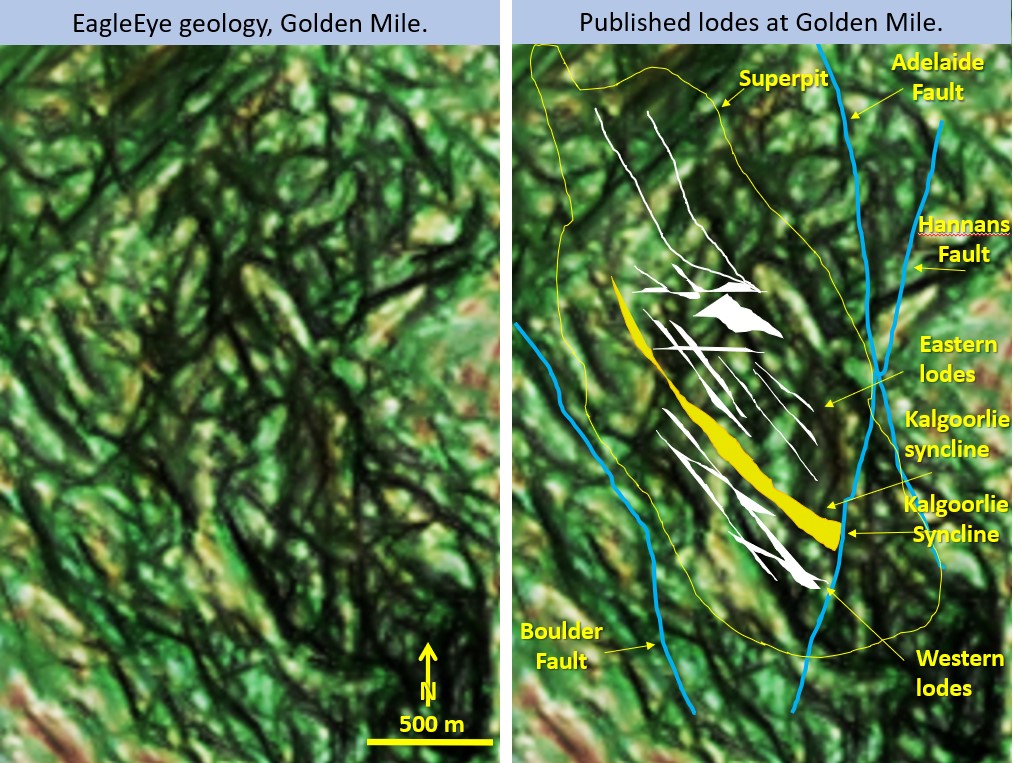Figure 5j. Superpit area close, Published and EagleEye geology and lode correlation.
Objective.
To get detailed structural geology from the Australia wide magnetics. For instance, I have never seen the magnetics of the Kalgoorlie Superpit or a detailed magnetics of the specific Kalgoorlie Area. There is none on the publicly published free data.
This is the main problem with the internet. There is almost no magnetics, gravity type image available if one doesn’t go into ‘pay as you go’ academic papers. I notice there is less available now than 5 years earlier because everyone wants to make money from their research. EagleEye structural geology at any scale of any geophysical image is FREE to use, if you figure out how to operate the system or as long as I have researched the area.
Observations from the above Figure 5 j.
The left image is the EagleEye image. The right image is the EagleEye image with the geology and lodes overlaid from Clout et al 1990 paper. A comparison between the image and superimposed geology is presented below.
Faults.
The Adelaide and Hannans Star faults (blue) at the existing southern cut off of the Golden Mile, which I have mapped on the 12 level Chaffers, are in the right place and quite clear. The NS Adelaide Fault is through-going and is the main fault.
There is a fault at the position of the NNW trending Boulder Fault but the main fault is to the west on my magnetics plan (lower left corner). I would suggest this is the true position of the Boulder Fault as it has all of the same NNE offsets that the published plan has.
These EagleEye magnetic enlargements show that these major structures are clearly seen in the right position from the local mapping represented by the Clout et al 1990 paper. In local magnetic studies they are not often seen clearly because of the huge magnetic disruption of the treatment plant, pit, dumps and Kalgoorlie city. Thus my EagleEye image could be better than local magnetics images. Point to ponder??
Stratigraphy and stratigraphic structure.
Not much is seen of the local stratigraphic structure. However, the NW trending Kalgoorlie Syncline/Golden Mile Fault is observed (yellow) from north of the Adelaide Fault to the NW of the image. It is in the correct position.
Lode Systems.
The Eastern Lode system is to the north of the Kalgoorlie Syncline (yellow) and the western Lode System is to the south.
There are 3 main directions of the Golden Mile lode structures.
The NNW Main lode system, NW to WNW Caunter lode system, and EW-ENE Cross lode system. All of these structural directions are represented on the EagleEye image but the scale is too small to see them clearly. We will look at the Superpit area at a larger scale in the next post to remedy this.
The southern cutoffs for the Eastern Lode System appear to be NS fault lines parallel to the Adelaide fault.
The northern end of both the Western Lode and Eastern systems terminate on NNE fault lines parallel to the Hannans Star Fault.
The Cross Lodes in the Eastern Lode System parallels strong EW and ENE structures.
The Golden Mile’s most complex and profitable area (greatest ounce / vertical metre) is an area bounded by the Perseverance, South Kalgoorlie and Iron King shafts and the Oroya open pit. On the EagleEye plan this area is easily seen as the most structurally complex with all of the above mentioned structural directions intersecting in this area (white solids areas).
Conclusions.
The structural geology of the Golden Mile faults and lodes is fairly represented on the EagleEye plan. This is a good achievement it has been magnified about 4,000 times from the original image which was a 216 KB colour contour image – yet it has orders of magnitude more structural detail.
The main problem with the Internet is that there is almost no local Kalgoorlie magnetics, gravity type images available if one doesn’t go into pay as you go academic papers. I notice there is less data now than 5 years earlier because everyone wants to make money from their research.
EagleEye structural geology at any scale of any geophysical image is free to use if you learn to use EagleEye or failing that, if I have researched the area. Many of the EagleEye images are on the internet as ‘free to use’ and also on my website. Go to ARCHIVES to find the area you want to explore and see if I’ve covered it.
Failing that I’m always looking for new challenges, so, if you want to learn how to operate EagleEye, or want an area looked at, don’t hesitate to let me know via the comments section on my web posts or via my LinkedIn posts.
Next post we will look at a surprising aspect of the Golden Mile mineralisation I haven’t seen mentioned, in papers or on plans.
Cheers and happy exploration for new Golden Miles, 60 million ounces and counting.
Bob Watchorn

